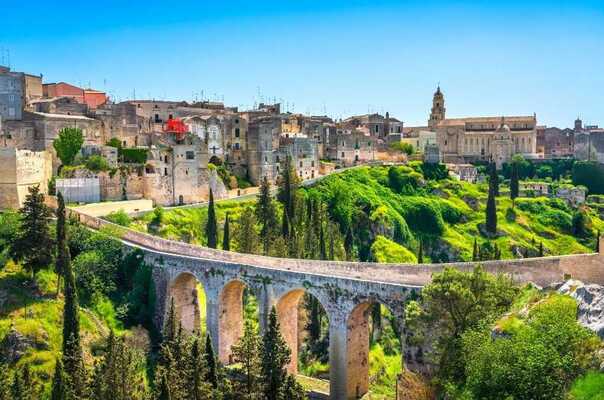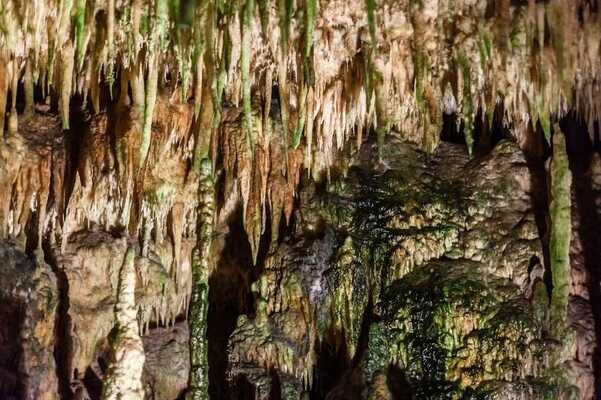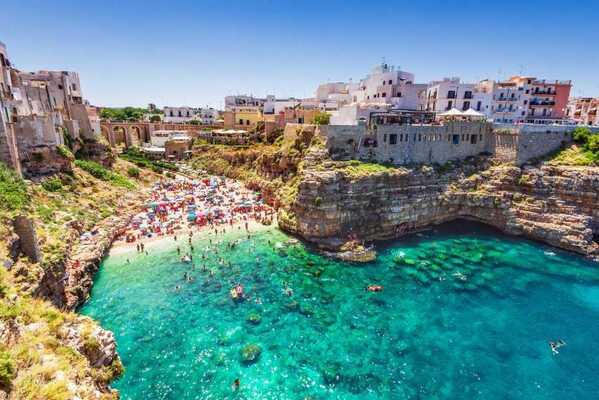Matera
Basilicata is a region rich in beauties not only historical and cultural but also from a culinary and entertainment point of view. One of the most famous cities in the region is Matera, declared a World Heritage Site by UNESCO in 1993 and named European Capital of Culture 2019. Every year it attracts thousands of tourists who flock to admire the “Sassi di Matera“, the buildings made with this typical stone.

What to see in Matera
Matera’s Sassi are one of the most famous attractions of Matera: they are alleys, houses, churches, gardens, underground tunnels that make it similar to a beautiful nativity scene to be explored and photographed (with breathtaking beauty especially in the evening).
The Sassi are divided into two districts: Sasso Barisano, the largest district, full of shops, restaurants and hotels, and Sasso Caveoso, the oldest part. The city is also rich in rock churches and natural areas and there is also no shortage of museums or unmissable events to participate in.
A building worth visiting is Casa Noha, an ancient residence that belonged to a noble family and which today is a tourist information center or, again, the Cathedral of Matera, from which it is possible to admire the landscape of Sasso Barisano, which since 1627 has been dedicated to the Madonna della Bruna and Sant’Eustachio, protectors of the city. Inside, there are numerous treasures such as a Byzantine fresco representing the Madonna della Bruna with child, the Last Judgment, the wooden choir sculpted by Giovanni Tantino and the altarpiece “Virgin with Child and Saints” located on the main altar.
In addition to this church, there are many rock churches from the medieval era, that is, caves transformed into prayer centers in which it is possible to distinguish crypts, hermitages, basilicas and sanctuaries: in all, there are around 150 of those present in the territory of Matera such as the Church of San Pietro Barisano, the Church of Santa Lucia alle Malve, the Church of Santa Maria de Idris and many others all to be explored to relive the charm of the mysterious and ancient Matera

Another beautiful place to visit is the Palombaro which is located along the large cistern dug under Piazza Vittorio. It is possible to explore the rooms of the cistern with a tour at 17 meters deep so as to discover in detail the genius of this work of hydraulic engineering. It is also possible to visit the Musma Museum in Matera dedicated to contemporary sculpture from 1800 to today and which also houses the Vanni Schelwiller library which preserves over 5000 volumes donated by the widow of the well-known publisher or the Domenico Ridola National Archaeological Museum, the largest ancient of Basilicata with the relics donated by Doctor Domenico Ridola to the city.
To get a taste of the life of the shepherds of the past in Matera, in Vico Solitario it is possible to visit the Cave-House represented by a single room in which families of more than 10 people and animals once lived. Among the alleys of Matera it is also possible to come across shops where you can find local artisan products and buy beautiful souvenirs.
Not only art and history in beautiful Matera but also natural areas that can be explored by lovers of walking or trekking. Beautiful excursions can be carried out at the Murgia Materana Park, at the San Giuliano Regional Reserve or Colle Timmari.
And for those who love nightlife, Matera can satisfy all needs with its numerous places where you can taste delicious dishes or have an aperitif. Bars and clubs of the historic center which, especially during the summer, cheer up the guests with live music and DJ sets.
What to eat
Anyone who comes to visit Matera cannot miss the delicacies of the traditional cuisine or the typical products of the area. Matera culinary tradition is purely peasant and pastoral, rich in legumes, vegetables, cheeses (caciocavallo podolico, cacioricotta, salted pecorino and many others), meats and homemade pasta. Among the dishes to be tasted, in fact, you cannot miss the orecchiette with tomato sauce or with turnip tops or with mushrooms. All this to be accompanied with Matera IGP bread, a bread made exclusively with durum wheat semolina.
A meat-based dish is the pignata, made with mutton, vegetables, herbs, all cooked in terracotta pots in a wood oven or ciallèdd, a soup of potatoes, onions, herbs, eggs and turnips served with stale bread or crapiata, a dish based on legumes, wheat and potatoes. Again, typical poor but genuine dishes are broad beans and chicory or gnummiredd, i.e. rolls of lamb offal, liver, lung, heart and sweetbreads tied together by casing. These excellent traditional popular dishes can be accompanied by fine wines such as reds (Aglianico, Primitivo, Rosso Jonico) and whites (Greco and Moscato).
Among the local products to take home, there are sweet peppers called Cruschi peppers, typical of Basilicata. They are dried in the sun and fried, with the result of being very similar to chips, very crunchy. These peppers are often used to make fresh pasta dishes (such as orecchiette or strascinati) also accompanied by turnip greens.
And for those who love street food, you cannot miss the delicious focaccia made with durum wheat and cooked in a wood-fired oven, very often topped with fresh cherry tomatoes and olives, an ideal snack for those who want to eat and continue wandering among the stones.
As for desserts, the typical dry sweets made with almonds, nutmeg and cinnamon are the strazzate. There are also many ice cream parlors that offer artisanal ice creams with many flavors to try.
How to get to Matera
You can reach Matera in different ways:
- by plane, the closest airport is Bari-Palese (about 60 km away) from which you can reach the Matera by train or bus or car.
- By train, for those arriving from Bari, simply take the Ferrovie Appulo Lucane and reach Matera station in 80 minutes.
- By bus, there are several companies that comfortably reach the city of Matera from all over Italy.
- By car. Those coming from the Adriatic Coast need to follow the A14 motorway to Bari Nord. From here follow the state road 96 to Altamura and then the state road 99 to Matera. For those coming from the Tyrrhenian Coast, however, it is necessary to follow the Salerno-Reggio Calabria road until the exit for Sicignano. Then take the E847 up to Potenza and then take the state road 407 Basentana for Metaponto and finally the exit for Matera. Instead, for those coming from Salento, it is necessary to pass Taranto, then take the SS106 Ionica until the Matera exit.

Gravina in Puglia
Gravina in Puglia, a fascinating and mysterious town in the Alta Murgia, rich in rock environments and historical, artistic and natural beauties.

Castellana Grotte
Castellana Grotte, a town in Bari famous for its suggestive caves but also for an artistic, cultural and gastronomic heritage waiting to be discovered.

Polignano a mare
Crystal clear waters, cliffs and majestic caves to be admired, breathtaking views, music and good food: all this and much more is Polignano a Mare, a beautiful Apulian town in the province of Bari.
